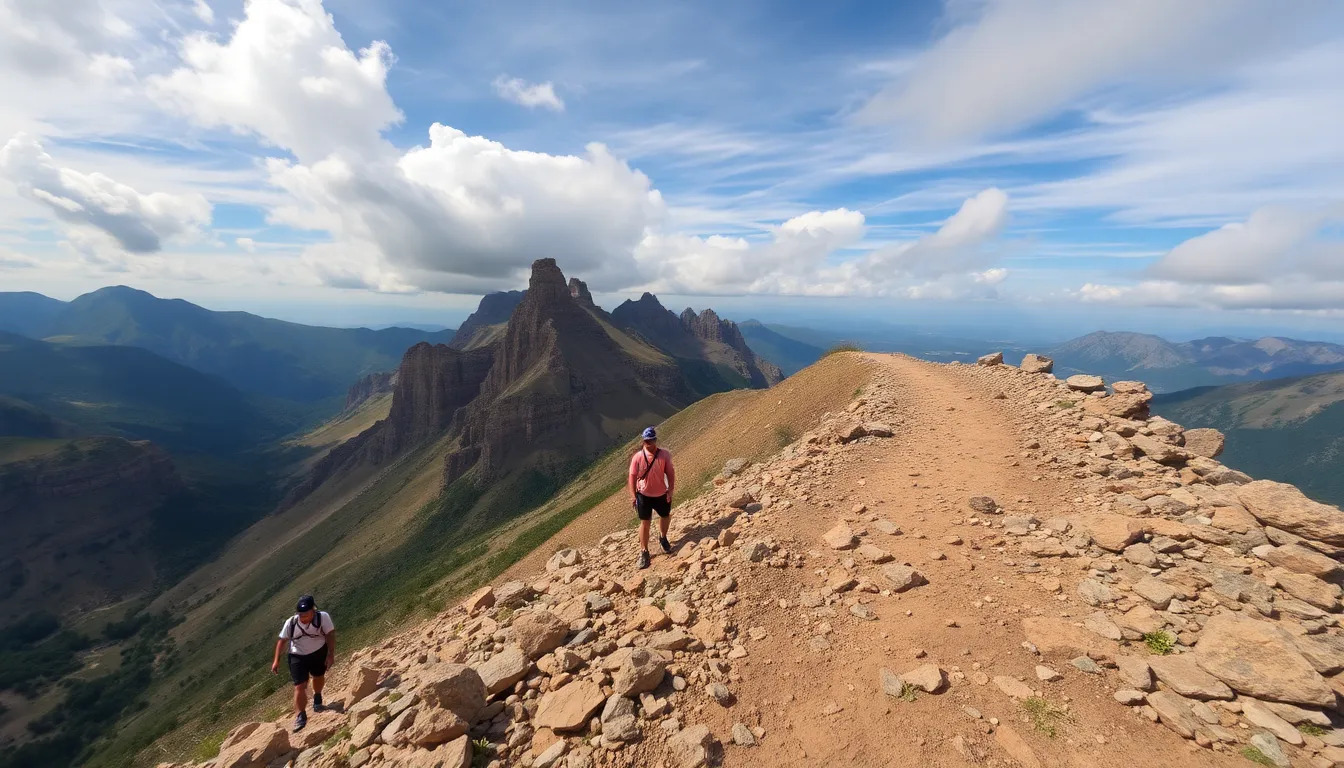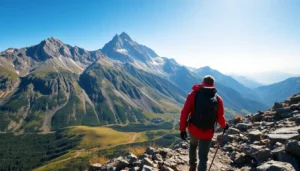Table of Contents
ToggleTimgoraho Mountain stands tall and proud, beckoning adventurers with its stunning vistas and challenging trails. But before lacing up those hiking boots and strapping on a backpack, it’s essential to consider just how tough this climb really is. Spoiler alert: it’s not a walk in the park, unless that park has steep cliffs and unpredictable weather.
Overview of Timgoraho Mountain
Timgoraho Mountain stands as a remarkable peak located in the Himalayan region. Many adventurers are drawn to its stunning views and diverse ecosystems. Features like lush valleys and rocky ridges add to the mountain’s allure, making it an attractive spot for both seasoned hikers and novices.
Elevation reaches approximately 3,500 meters, and the climbing routes vary in difficulty. Steep inclines and challenging terrains frequently test climbers’ skills. Navigating the trails requires focus; footing can shift unexpectedly due to loose rocks and changing weather. Conditions can range from sunny skies to sudden storms, which often catch climbers off guard.
Accessing Timgoraho typically involves a multi-day trek. Starting points usually lie in nearby villages, where climbers prepare for the journey. Before attempting the climb, it’s essential to evaluate one’s fitness level and experience. Those unfamiliar with high altitudes might experience altitude sickness, which can hinder progress.
Timing the ascent plays a critical role in the climbing experience. The best times to visit are during spring and autumn when weather conditions are more stable. During these seasons, visibility improves, and temperatures are generally more favorable for outdoor activities.
Planning a trip to Timgoraho Mountain includes considering equipment and necessary supplies. Gear such as sturdy hiking boots, warm clothing, and adequate food provisions significantly influence climbers’ comfort and safety. Rental options often exist in local villages for those needing specialized gear.
Climbers should prioritize safety and stay informed about potential hazards. Engaging with experienced guides can enhance the experience by providing local insights and navigation assistance.
Difficulty Level of the Climb

Climbing Timgoraho Mountain presents a significant challenge due to various factors that climbers must navigate.
Trail Conditions
Trails on Timgoraho Mountain often exhibit steep inclines, which can test climbers’ endurance and strength. Loose rocks create unstable footing, demanding constant attention. Sections of the trail may become narrow, requiring careful maneuvering. Trekkers encounter diverse terrains, ranging from rocky outcrops to lush valleys, enhancing the climb’s complexity. Knowledge of one’s limits plays a crucial role, especially for those less experienced with such challenging paths.
Weather Considerations
Weather conditions can change rapidly on Timgoraho Mountain, impacting the climbing experience. Sunshine can quickly shift to storms, generating hazardous situations for climbers. Early morning is typically the best time for ascents to avoid afternoon storms. Spring and autumn seasons feature more stable weather patterns, offering improved visibility and milder temperatures. Monitoring forecasts before and during the climb helps ensure safety and better preparedness for the unpredictable environment.
Physical Fitness Requirements
Climbing Timgoraho Mountain demands significant physical fitness. Climbers should prepare their bodies for diverse terrain and altitude challenges.
Recommended Training
Endurance training is crucial for tackling steep climbs. Hiking regularly builds stamina, so incorporating day hikes with elevation gain strengthens leg muscles. Cardiovascular workouts, such as running or cycling, enhance aerobic fitness. Additionally, strength training focusing on legs, core, and upper body supports climbing movements. Flexibility exercises improve balance and help prevent injuries during the ascent. Engaging in specific climbing drills also builds necessary skills for navigating challenging sections of the trail.
Essential Gear
Proper gear significantly enhances safety and comfort during the climb. Sturdy hiking boots provide necessary ankle support for rocky terrain. Breathable clothing layers ensure temperature regulation in varying weather conditions. A reliable backpack carries essential supplies, such as food and water, alongside navigation tools like maps or GPS devices. Trekkers should not forget a first aid kit for addressing potential injuries. Lastly, trekking poles offer stability and help manage steep descents, making them a valuable addition to any climber’s gear.
Climbing Experience
Climbing Timgoraho Mountain presents unique challenges based on experience levels. Beginners often face difficulties with steep inclines and rocky terrain. Adequate preparation is crucial for those who lack climbing experience. Knowledge of altitude sickness and proper acclimatization significantly aids novices.
Experienced climbers navigate the trails with increased confidence. They typically possess familiarity with high-altitude conditions and understand the importance of weather monitoring. Familiarity with proper gear and techniques enhances safety. Building stamina through previous climbs also offers advantages.
Both groups benefit from engaging experienced guides. Guides provide invaluable local insights and can enhance the overall climbing experience. Communication among climbers fosters a supportive environment, enabling each to tackle challenges effectively. All climbers must prioritize safety by listening to their bodies and adjusting plans as needed.
Safety Tips for Climbing Timgoraho
Prepare for the climb by assessing personal fitness levels and experience. Each climber’s abilities impact their journey, especially at high altitudes. Understanding altitude sickness is essential; symptoms like headaches or nausea can impair progress.
Wearing appropriate gear enhances safety and comfort. Sturdy hiking boots provide essential support, while breathable clothing layers adjust to changing temperatures. Additionally, a first aid kit, navigation tools, and trekking poles increase stability on rocky paths.
Staying informed about weather conditions is vital. Conditions can shift from sunny to stormy within hours, so monitoring forecasts before and during the ascent proves crucial. Opt for early morning starts to avoid adverse weather.
Engaging with experienced guides offers valuable insights. Guides know local trails, potential hazards, and the best routes to take, making them an excellent resource for climbers of all levels. They also foster a supportive environment, especially for beginners.
Maintaining focus on personal limits is important. Pushing beyond capabilities can lead to accidents or exhaustion. It’s advisable to listen to one’s body and adjust plans as necessary, whether that means taking breaks or reconsidering the climb altogether.
Prepare for the unexpected and make contingency plans. Having a flexible itinerary helps accommodate unforeseen challenges or delays. Carrying extra food and water provides a safety buffer for longer climbs.
Ultimately, climbers should prioritize safety above all. Following these guidelines helps ensure an enjoyable and successful experience on Timgoraho Mountain.
Climbing Timgoraho Mountain is a rewarding yet demanding adventure. The breathtaking views and diverse ecosystems make it an attractive destination for those seeking challenge and beauty. However, climbers must be well-prepared for the steep inclines and unpredictable weather that can test even the most experienced hikers.
Understanding personal limits and honing physical fitness are essential for a successful ascent. Engaging with experienced guides can provide valuable insights and enhance safety. With the right preparation and mindset, climbers can navigate Timgoraho’s challenges and create unforgettable memories on this majestic peak.






